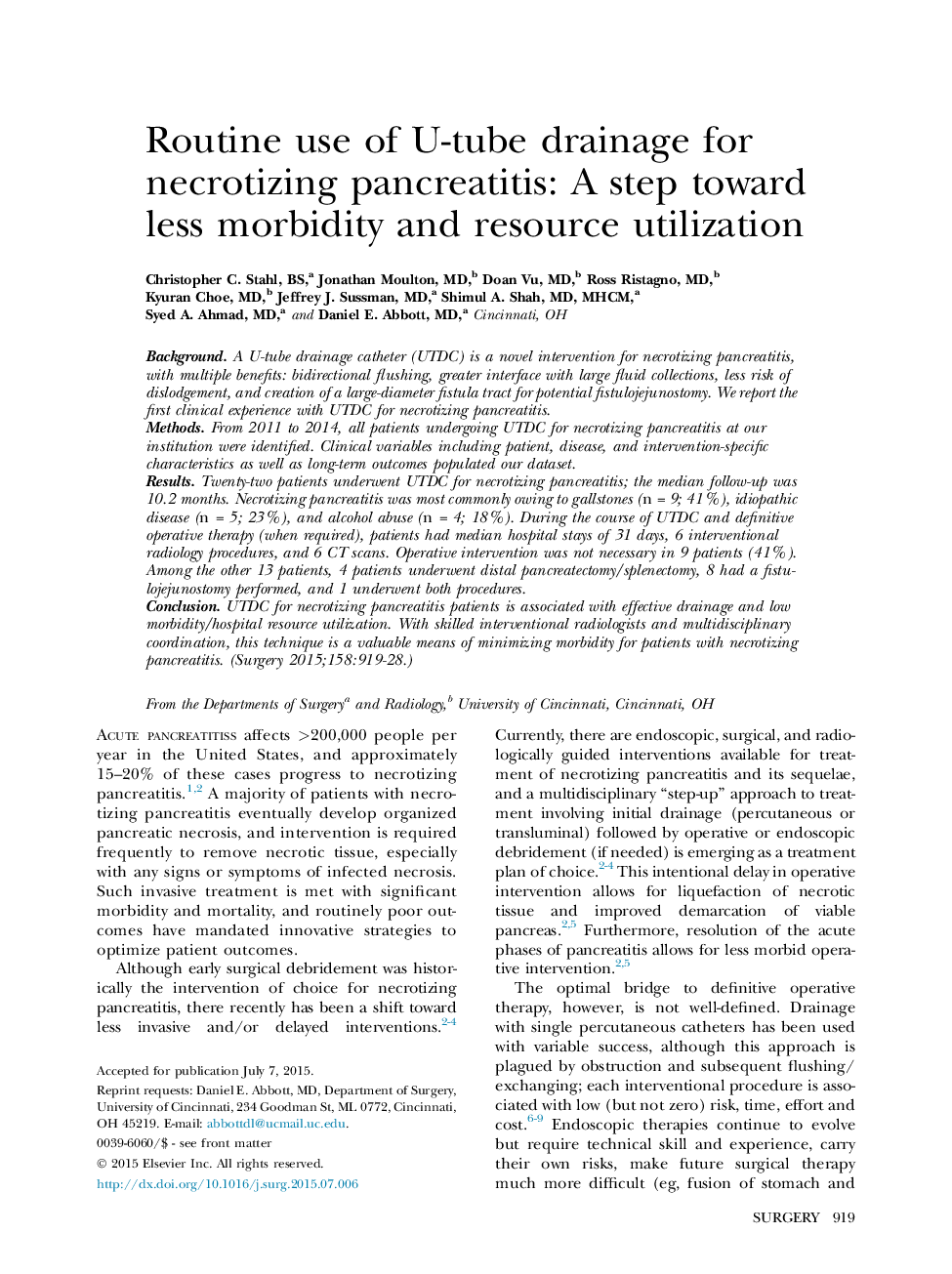| Article ID | Journal | Published Year | Pages | File Type |
|---|---|---|---|---|
| 4306937 | Surgery | 2015 | 10 Pages |
BackgroundA U-tube drainage catheter (UTDC) is a novel intervention for necrotizing pancreatitis, with multiple benefits: bidirectional flushing, greater interface with large fluid collections, less risk of dislodgement, and creation of a large-diameter fistula tract for potential fistulojejunostomy. We report the first clinical experience with UTDC for necrotizing pancreatitis.MethodsFrom 2011 to 2014, all patients undergoing UTDC for necrotizing pancreatitis at our institution were identified. Clinical variables including patient, disease, and intervention-specific characteristics as well as long-term outcomes populated our dataset.ResultsTwenty-two patients underwent UTDC for necrotizing pancreatitis; the median follow-up was 10.2 months. Necrotizing pancreatitis was most commonly owing to gallstones (n = 9; 41%), idiopathic disease (n = 5; 23%), and alcohol abuse (n = 4; 18%). During the course of UTDC and definitive operative therapy (when required), patients had median hospital stays of 31 days, 6 interventional radiology procedures, and 6 CT scans. Operative intervention was not necessary in 9 patients (41%). Among the other 13 patients, 4 patients underwent distal pancreatectomy/splenectomy, 8 had a fistulojejunostomy performed, and 1 underwent both procedures.ConclusionUTDC for necrotizing pancreatitis patients is associated with effective drainage and low morbidity/hospital resource utilization. With skilled interventional radiologists and multidisciplinary coordination, this technique is a valuable means of minimizing morbidity for patients with necrotizing pancreatitis.
